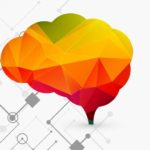RankBrain,
TensorFlow, and
AI? Huh?
Machine learning methods in
SEO (Search Engine Optimization) constitute the current, most effective system for
optimizing websites and improving their
SERPs (Search Engine Results Pages) in Google and other search engines. Apparently,
RankBrain is the latest algorithm that is part of Google’s
Hummingbird.
1 Hummingbird has included other platform updates such as
Panda, Penguin and Pigeon.
RankBrain
Google’s RankBrain uses artificial intelligence that creates vectors from a vast array of written text.2 RankBrain has become Google’s third-most significant signal for the result of a search query; Google has not declared the first two algorithms’ signal sets- those that determine SERPs.
Artificial Intelligence
Artificial intelligence teaches itself and learns from its database to make new connections and understand new meanings. True AI is supposed to be as smart as humans, but obviously, this has not yet occurred. Machine learning is almost synonymous to artificial intelligence in that it is about the computer teaching itself instead of by humans or by programming. Yet, ironically, in 2016 a lead Google engineer mentioned that Google itself didn’t fully understand RankBrain‘s AI (Artificial Intelligence). Currently, with RankBrain, the software is five times faster than the first generation of Google’s algorithms.3
TensorFlow
Google has also deployed TensorFlow, an AI/Machine Intelligence system, that is an open source program so that ideas can be shared and innovated by researchers and anyone that wishes to access or edit the code. TensorFlow’s applications can recognize speech in a crowded space, find photos of your pets or even translate a street sign in a foreign language in real time. “We have a lot of work ahead of us. But with TensorFlow we’ve got a good start, and we can all be in it together,” says Google.4
TensorFlowOnSpark
Yahoo has also followed Google on TensorFlow by introducing an open-source platform TensorFlowOnSpark.5 Migrating from TensorFlow to TensorFlowOnSpark requires changing only a few lines of code. This open source framework is also for deep learning, or training artificial neural networks on enormous data and images, and directing these networks to contextually related new data.
Machine Learning
According to Christopher S. Penn, a Marketing Speaker, machine learning will be the best tools for 2016 and going forward.6 Up until now, SEO marketers have relied on keywords and phrases to create the content of their marketing strategy. Machine learning would instead identify a concentrated cluster of related words, then it will build nodes of connections from which the computer learns and develops. Penn suggests that first, digital marketers need to identify the top 10-20 pages, download the text from those pages to a machine learning tool, such as TensorFlow, to reveal related topics to the subject matter, and market to those related topics. By capturing a new set of related topics, content marketing will be more effective.
SEO Content
Similarly, Aleh Barysavich, Founder and Chief Marketer at Link-Assistant.com, a company that makes the SEO PowerSuite, advises not only to write content on related keywords, but cover many aspects of the subject matter at hand.7 For instance, if you were to write an article on “goals,” you wouldn’t merely write on “setting goals,” but also on “define goals,” “how to set goals,” “goal achievement,” and other related terms, which would lead to a robust, complex article that utilizes many concepts and keyword phrases throughout the article. In this way, any user should be able to relate to some keyword concepts and topics throughout the article.
In fact, Barysavich provides a systematic way to approach effective websites’ semantic web content marketing that will appease RankBrain. First, he says to start off with Google AdWords’ Keyword Planner and instead of concentrating on one keyword phrase/main phrase, also to include multiple keyword phrases for any one page. Then you would apply these multiple keyword phrases into titles, subheads, and other sections of the content so that if someone were to search for the keyword concept, it would be included.
Next, you would actually search for those keyword phrases, and on the bottom of Google’s pages of “searches related to the search term.” You may want to incorporate these keyword phrases or similar keyword concepts and place them throughout the body of the creative work. The point is not to stuff the content with keywords, but rather to touch on various aspects of the keyword concept so that many ideas will be covered.
Then, you would need to have your content pass what Barysavich calls the “People Test“. The whole idea is to provide quality content to searchers that provides value to their search, so as not to manipulate many search ranking factors.
Barysavich also urges webmasters to be sure to review their web analytics to assess if visitors not only clicked on the SERP but stayed on to read other pages, or if they engaged with social media within the article, etc.
Conclusion
Overall, RankBrain is focused on the quality of the search. If you consider what your audience will benefit from reading the content, then most likely your objectives will be favorable to Google’s goals, which are to provide content that people will find valuable.

Citations
1. Sullivan, D. (2016, June 23). FAQ: All about the Google RankBrain algorithm. Retrieved February 20, 2017, from http://searchengineland.com/faq-all-about-the-new-google-rankbrain-algorithm-234440
2. Clark, J. (2015, October 26). Google Turning Its Lucrative Web Search Over to AI Machines. Retrieved February 20, 2017, from https://www.bloomberg.com/news/articles/2015-10-26/google-turning-its-lucrative-web-search-over-to-ai-machines
3. J.D. (2015, November 14). Google’s AI: RankBrain and TensorFlow. Retrieved February 20, 2017, from https://www.spaceandintelligence.com/index.php/artificial-intelligence/118-google-s-ai-rankbrain-and-tensorflow
4. ibid.
5. Norvet, J. (2017, February 13). Yahoo open-sources TensorFlowOnSpark for deep learning with big data. Retrieved February 20, 2017, from http://venturebeat.com/2017/02/13/yahoo-open-sources-tensorflowonspark-for-deep-learning-with-big-data/
6. Penn, C. S. (2016, January 20). Http://www.christopherspenn.com/2016/01/the-secret-seo-tool-of-2016-machine-learning/. Retrieved February 20, 2017, from http://www.christopherspenn.com/2016/01/the-secret-seo-tool-of-2016-machine-learning/
7. Barysevich, A. (2016, May 03). How to Use Google RankBrain in SEO. Retrieved February 20, 2017, from https://www.searchenginejournal.com/google-rankbrain-affect-seo-2016/162153/




